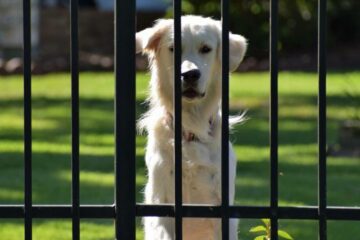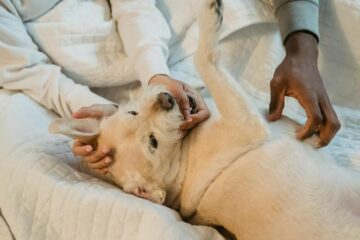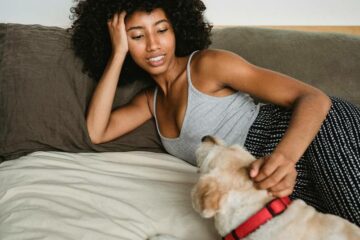My Dog Growled at Me for the First Time, What Do I Do?
When your dog growls at you for the first time, it can be a startling experience. Is it an indication of something more serious, or could it just be a moment of play gone wrong? Understanding the nuances behind why your dog growled at you for the first time is important for maintaining a healthy and respectful relationship.
This article will guide you through interpreting between playfulness and aggression and then teach you how to respond and deal with the behavior appropriately. We’ll also address common concerns, such as whether punishment is effective and how to foster positive behaviors in puppies so that growling doesn’t become a habit. Let’s begin!
My Dog Growled at Me for the First Time
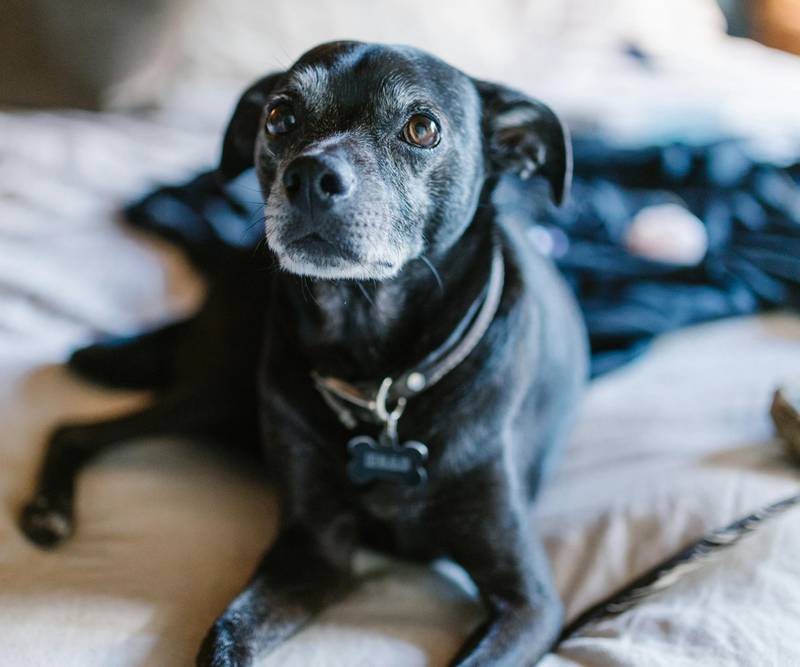
When your dog growls at you for the first time, it can be a concerning and surprising experience. Growling is a form of communication used by dogs to express discomfort, fear, or warnings. Understanding the context in which the growl occurred is important for addressing it properly. It’s important to recognize that growling is not necessarily out of aggression but can sometimes be a sign that your dog is experiencing some form of distress or discomfort.
Dog Just Growled at Me for the First Time: Do I Punish?
Punishing a dog for growling can be counterproductive, as it may teach them to suppress warning signals until they feel forced to bite without warning. Instead of punishment, focus on identifying the cause of the growling and addressing the underlying issue.
Providing a calm and reassuring presence can help your dog feel safer and reduce the likelihood of growling as a response.
Dog Growled at Me for First Time: Play or Aggression?
Determining whether your dog’s growl is a sign of play or aggression involves observing their body language and the context of the situation:
- Play: Play growling is often accompanied by a bouncy, exaggerated posture, wagging tail, and sometimes a ‘play bow‘ where the front end is down and the back end is up. The overall energy is light and happy.
- Aggression: Aggressive growling usually comes with stiff body language, bared teeth, a fixed stare, or trying to make themselves appear larger. The energy feels tense and serious.
How to Respond When Your Dog Growls
Responding to your dog’s growl involves understanding and addressing the cause of their discomfort:
- Stay calm: Do not react with anger or fear. Remain calm and composed to avoid escalating the situation.
- Assess the situation: Try to understand what might have triggered the growl. Look for immediate threats or discomforts, such as an unfamiliar situation or a painful spot being touched.
- Give space: If your dog seems to be growling out of fear or discomfort, give them some space to cool down before trying to interact with them again.
- Use commands: If your dog is growling over a possession like a toy, the “leave it” command will be very helpful. Start with a treat in your hand and let your dog sniff it, then close your hand around the treat. Say ‘leave it.’ Wait until your dog stops sniffing and nibbling at your hand. As soon as they back away, praise them and give them the treat. Practice regularly, increasing the difficulty gradually by placing the treat on the ground and covering it with your hand.
Your dog growling for the first time can be a sign that they are experiencing some form of discomfort or distress. By making these changes and responding with understanding along with patience, you can help your dog feel secure and trusting of you.
It’s important to remember that the underlying behavioral issues (fear, anxiety, resource guarding, etc.) that were causing all of this to begin with will still be present. And until you address those, any positive changes you see will only be temporary.
“Well, how do I make these changes last?”
By getting your dog to truly choose to follow your direction, that’s how. I tried many times to write out how you can do that before deciding it made more sense to just link you to the free video series that explains it better than I’d ever be able to.
The series is by a man named Dan who is one of the world’s leading dog obedience trainers. In it, he teaches you how to put an end to things like your dog growling at you and all other misbehavior using his fast and easy-to-follow methods.
In the first video, Dan will reveal to you why the two most common methods of dog training only doom you to failure. You can watch the video now by clicking here. Follow the proven system he’ll show you in his series and you’ll never have to spend another second worrying about why your dog growled at you ever again!
My Puppy Growled at Me for the First Time
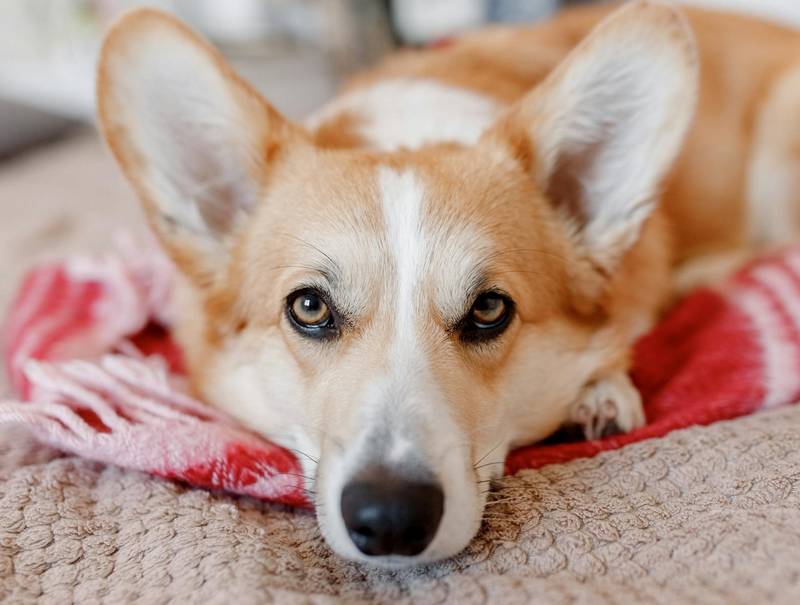
When your puppy growls at you for the first time, it can be an unsettling experience, but it’s often a part of their learning and development process. Growling is a form of communication, and understanding why your puppy is growling is crucial to addressing the behavior correctly. It’s important to distinguish between growling out of fear, discomfort, or as part of play, and to respond appropriately to nurture a healthy, respectful relationship with your puppy.
How to Tell When Puppy is Mad or Playing
Determining whether your puppy is mad or playing when they growl involves paying close attention to their body language and the context of the situation:
- Playful growling: Accompanied by loose, wiggly body movements, play bows (front end down, back end up), and a generally happy demeanor. The puppy may also have a ‘smiling’ expression and bark or growl in a high-pitched tone.
- Aggressive or fearful growling: Characterized by a stiff posture, raised hackles, bared teeth, and possibly a lowered head. The growl may be deeper, and the puppy might try to make themselves look bigger or retreat. Learn how to respond to these situations in the first section.
How to Teach Puppy Proper Play
Teaching your puppy proper play behaviors is important for their social development and to prevent aggressive tendencies:
- Encourage gentle play: Use toys to play with your puppy, teaching them to bite the toys instead of hands or feet. If they bite too hard, let out a yelp to signal that the play is too rough and briefly stop the play.
- Consistent rules: Establish and maintain consistent rules about acceptable play behaviors. Reward gentle play with praise and treats, while discouraging rough play.
- Time-outs: If your puppy becomes overly excited or begins to play too roughly with you or an older dog, give them a short time-out to calm down before resuming play.
- Socialization: Expose your puppy to other dogs and puppies in controlled environments to learn appropriate play behaviors and social cues from their peers.
Puppy Growled at Me When I Pet Her
If your puppy growled at you when you pet her for the first time, it’s important to approach the situation with patience and understanding:
- Consider the context: Was the petting too vigorous, or did you touch a sensitive area?
- Give your puppy space and time to calm down before attempting to pet her again.
- Gradually desensitize your puppy to being touched in different areas, using treats and positive reinforcement to build positive associations.
- If the growling continues or if you suspect pain or discomfort, consult with a veterinarian to rule out any medical issues.
In summary, your puppy growling for the first time can be a learning opportunity for both of you. By understanding the reasons behind the growl and teaching proper play and handling, you can help your puppy grow into a well-adjusted and happy dog. Always approach training with kindness, consistency, and positive reinforcement to build a strong, trusting bond with your puppy.
You’re probably ready to get going now that you have all of your questions about why your dog growled at you for the first time answered, so I’ll let you begin. Best wishes, and thank you for reading our article “My Dog Growled at Me for the First Time, What Do I Do?”.



